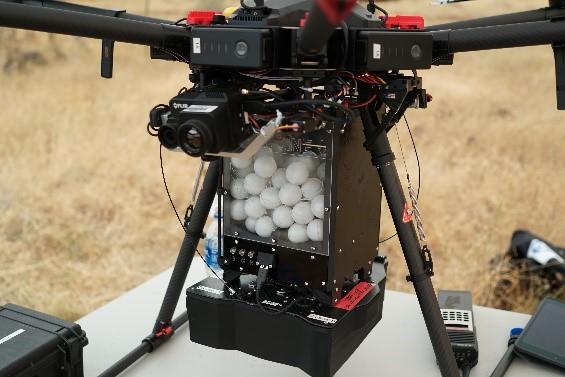Unmanned Aircraft Systems & Fire: A Conversation with Department of the Interior’s Steve Stroud
By Steve Stroud, DOI Office of Aviation Services Unmanned Aircraft Systems Fleet Manager
1) What is your background in wildland fire?
I have spent the last 22 years in wildland fire, including working with type 2 Hand crews, Light and Heavy Engines, Helicopter Rappel crews, Smokejumpers and Aerial Supervision. My current qualifications are Air Attack Group Supervisor, Division Group Supervisor, and ICT3
2) What is your current position and what National Park Service (or other ownership) units do you work on?
My current position is Unmanned Aircraft Systems Fleet Manager for the Office of Aviation Services, DOI.
I help manage all UAS Aircraft, Pilot standards and training for all the bureaus under the DOI with UAS programs. Those bureaus help to manage more than more than 480 million acres of public lands and millions more of subsurface and offshore resources covering roughly 20 percent of the U.S. DOI has a very large UAS program with 400 trained agency pilots and 450 agency owned UAS in the field.
3) What challenges do you face in implementing prescribed fire on those areas?

UAS is new technology and, getting managers used to a UAS can be difficult. Education on current policy, procedures, training, and positions helps managers make the decision to utilize UAS for a multitude of tasks.
4) How have you used unmanned aircraft systems in prescribed fires?
We had the opportunity to test and evaluate the Drone Amplified Ignis PSD payload on several wildfires in 2018. It proved to be a valuable and reliable tool for tactical firing operations on Incidents. We had 135 missions and dropped 12,000 PSD balls to support incident aerial firing operations. The tool works excellent to support crews as the “deep burner”, or to widen the blackline with crews supporting holding operations. It is effective for getting to those tough to get to ridges or terrain that is either too dangerous or to labor intensive to burn safely. We hope to have the opportunity to utilize the Ignis on a prescribed fire in the spring burn window. There are committees and policy that need approval and updating before we can utilize it for RX.
5) What have been the benefits of using aircraft systems in prescribed fires?
The main benefit is we can burn at night or dense smoke as the aircraft can be operated utilizing the Forward Looking Infra Red camera (FLIR). During the 2018 fire season we found it to be very effective for night operations. Not only because you can control intensity better, but you can utilize it as a holding resource to find spot fires easily at night or in smoky conditions
6) What have been the challenges of using aircraft systems in prescribed fires?
The main challenge is education on the availability and capability of the aircraft. It is impossible to test unless it can be used in a real time prescribed fire activity. Having the opportunity to test and evaluate the capability on wildfires gave us a real understanding of the capabilities and limitations of the aircraft, sensor, and payload. Once the policy and aerial ignition committee grants approval we will be able to utilize the aircraft on prescribed fire.
7) What suggestions do you have for those considering using aircraft systems in prescribed fires?
I say try it out and see if it is going to fit your needs. After seeing the potential of the aircraft and PSD payload, all of the nay-sayers we ran into initially on the fires in 2018 wanted to purchase and use them on their home districts. It also works as an excellent situational awareness tool for a multitude of tasks. The initial investment in training and equipment is high but then you have a tool that can be used just like any other tool we use for wildland fire. It is cost effective, safe, and affords you the ability to burn and hold in conditions that otherwise would be impossible.
For more information on DOI Unmanned Aircraft Systems visit the Office of Aviation Services website and check out a news story about their use of UAS technology during a wildfire in 2018.
Interested in having your prescribed fire organization, job, or experience profiled on our blog? Contact us!